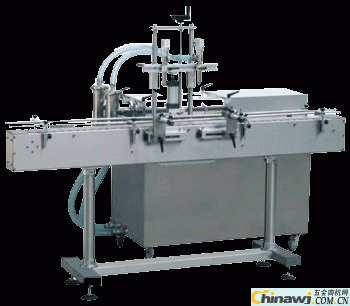Precautions for filling machine in summer and autumn
**Precautions for Filling Machines in Summer and Autumn** When using filling machines in different seasons, it's important to adjust your maintenance routine accordingly. Summer and autumn bring high temperatures and frequent rainfall, which can be challenging for machinery, including filling equipment. Although modern technology has improved the durability of many components, most filling machines still use steel parts alongside stainless steel. In hot and humid conditions, these machines are more prone to malfunctions due to increased moisture and heat. Stainless steel is not entirely rust-proof—it’s just regular steel with a protective alloy layer. If this surface gets scratched by sharp objects, it can lead to rust spots that may contaminate the products being filled. If you notice stains on the machine’s surface, gently clean them with alcohol. For non-contact areas, apply a special lubricant to maintain smooth operation. The cylinder of the filling machine is pre-lubricated at the factory, so avoid disassembling it or adding extra oil unless necessary, as this could damage internal components. Pay close attention to the sealing rings. If they become worn, replace them immediately to prevent leaks or contamination. Many parts of the filling machine, such as the stainless steel tees and three-way valves, are designed to be removable. During cleaning, take them apart and thoroughly wash them. After reassembly, make sure everything is back in its original position and test the machine for any unusual behavior. If everything works smoothly, you can resume production. In addition, summer and autumn create the perfect environment for bacterial growth due to high humidity. It’s essential to disinfect your filling machine regularly, especially if it's used in the beverage industry. Make sure all parts that come into contact with the product are properly cleaned and disinfected. At a minimum, clean and disinfect the pipelines once a week, and rinse them with water before each use. The beverage valve and tank should be cleaned and disinfected daily to prevent scale buildup, which can lead to bacterial contamination. Ensure that all lubrication points are kept separate from the product to avoid cross-contamination. By following these steps, your filling machine will remain in good condition throughout the summer and autumn months. This article was written by Shenyang Dongtai Filling Machine. Please cite the source: http://

Low creep clay refractory bricks are made of selected high alumina clinker, mullite, combined with clay as the main raw materials, high pressure molding, high temperature sintering and become. The product has excellent high temperature physical properties and chemical corrosion resistance. According to the creep rate (0.2MPa, 1280 ℃, 25h) can be divided into ≤ 0.4%, 0.6%, 0.8% of the three series of low creep clay brick.
Customized Low Creep Refractory Brick,Customized Low Creep Refractory Bricks,Customized R&D is Available Refractory Bricks
Huixian Xinwei Refractories Co. , https://www.xinweirefractory.com